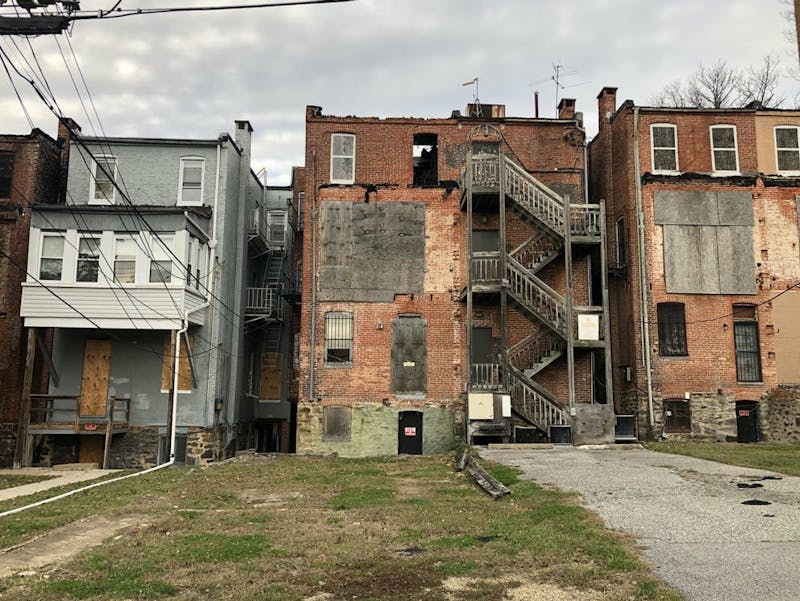
FILE PHOTO
Crenson's most memorable experience at The News-Letter was when he wrote a story that exposed Hopkins for owning run-down houses in Baltimore

FILE PHOTO
Crenson's most memorable experience at The News-Letter was when he wrote a story that exposed Hopkins for owning run-down houses in Baltimore
Not long after the middle of the last century, I became an undergraduate at Hopkins. I had received a rigorous but rather unexciting preparation at Baltimore City College, after which Hopkins felt like an awakening. The courses, of course, provided much of the stimulation, but there was an extracurricular electricity too. It became evident one morning in my freshman year as I walked across the Upper Quadrangle. I looked up and saw that someone had decorated the Gilman Hall clock with a beautifully executed Mickey Mouse face.
I lacked that kind of artistic talent and was nervous about heights, so I joined the staff of The News-Letter. My journalistic experience there helped to shape my approach to academic work. Instead of heading for the library to complete term paper assignments, I would head into Baltimore to interview people. That’s how I became an apprentice ward heeler to an East Baltimore political operative and city patronage appointee named Murph.
But my most memorable adventures occurred after I was elevated to the post of Features Editor. It was a difficult job: News just happens, features have to be invented. One of the inventions grew out of a rumor that the University owned a burlesque house on Baltimore Street’s notorious “Block.” I interviewed the University treasurer to find out about the institution’s property holdings. He insisted that Hopkins was not in the “real estate business.” (Obviously, a lot has changed since those days.)
Having gotten nowhere with the treasurer, I enlisted a staff member to join me in an expedition to the City Land Records Office. After searching the files there, we couldn’t figure out who owned the burlesque theater, but we did find a number of Hopkins-owned properties in some of the city’s most run-down neighborhoods.
We went back to the office, picked up the Polaroid and spent the rest of the afternoon snapping portraits of run-down row houses. At one of them, we found two unwashed and poorly dressed children. We paid them a quarter to stand in front of a slum building and look forlorn. But as we took their picture, we had to keep reminding them, “Don’t smile! Don’t smile!”
They performed admirably and appeared in the next edition of The News-Letter. The story consumed a whole page. In the left column was an article based on the interview with the treasurer; in the right column, there was the truth, and in between we spread out our pictures of the Baltimore slums to which Hopkins held title.
The paper’s Editors-in-Chief were summoned to the office of the assistant to the president for a stern and one-sided discussion. Since I wasn’t invited, I don’t know exactly what was said, but I learned that the word “expulsion” figured prominently. We wrote no more articles about the Hopkins properties. And when we saw the treasurer striding toward The News-Letter office to admonish us in person, my colleague and I courageously hid in the bathroom.
After that, I stuck to less inflammatory features, like arranging a conciliatory Anglo-American commemoration of the Boston Tea Party co-hosted by actress Jayne Mansfield and the British consul. It was in the Great Hall of Levering where ladies from the Ye Olde McCormick Tea House in colonial attire served the attendees. University Chaplain Chester Wickwire acted as master of ceremonies and raised money for research on cerebral palsy. Who could complain? Still, it seemed more fun to irritate University bureaucrats.